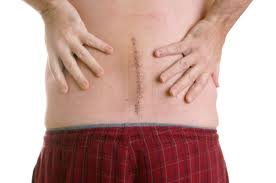Role of Costovertebral Joint Innervation in Back Pain
Pain in the neck, upper back, shoulder, arm or chest is fairly common in the general population, and has been linked to mechanical and  pathologic disorders originating from the cervical and thoracic spines, the shoulder, and the pulmonary and cardiac systems.
pathologic disorders originating from the cervical and thoracic spines, the shoulder, and the pulmonary and cardiac systems.
Accurate diagnosis of these painful conditions can be complicated because of the wide variety of tissues responsible for these systems. Practitioners of manual therapy often manipulate the costovertebral joints in order to relieve pseudo-angina, a painful condition thought to arise from the musculoskeletal structures.
This study of the human costovertebral complex was prompted by the suggestion that manipulation of the costovertebral elements and associated soft tissues may aid in treatment of these conditions. Specimens were obtained at autopsy and processed with standard histologic examination and immunocytochemical methods to detect neurofilaments, substance P, and calcitonin gene-related peptide.
Results: The soft tissues adjacent to the costovertebral joints were richly innervated with abundant fascicles and larger nerves, near the middle costotransverse ligament. The anterior capsule of the costovertebral joint was densely populated with fine bundles of axons, that appeared characteristic of mechanoreceptive free nerve endings. All costovertebral joints contained innervation within the anterior capsule and synovial tissues. Some joints also possessed intra-articular synovial folds, known as meniscoids. The authors conclude that the costovertebral joint possesses the requisite innervation for pain production in a manner similar to other joints of the spinal column.
Dr Jeff Banas treats Back Pain at his sports chiropractic practic in Mesa, AZ
Erwin WM, Jackson PC, Homonko DA. Innervation of the human costovertebral joint: implications for clinical back pain syndromes. Journal of Manipulative and Physiological Therapeutics, July/Aug. 2000:23(6), pp395-403